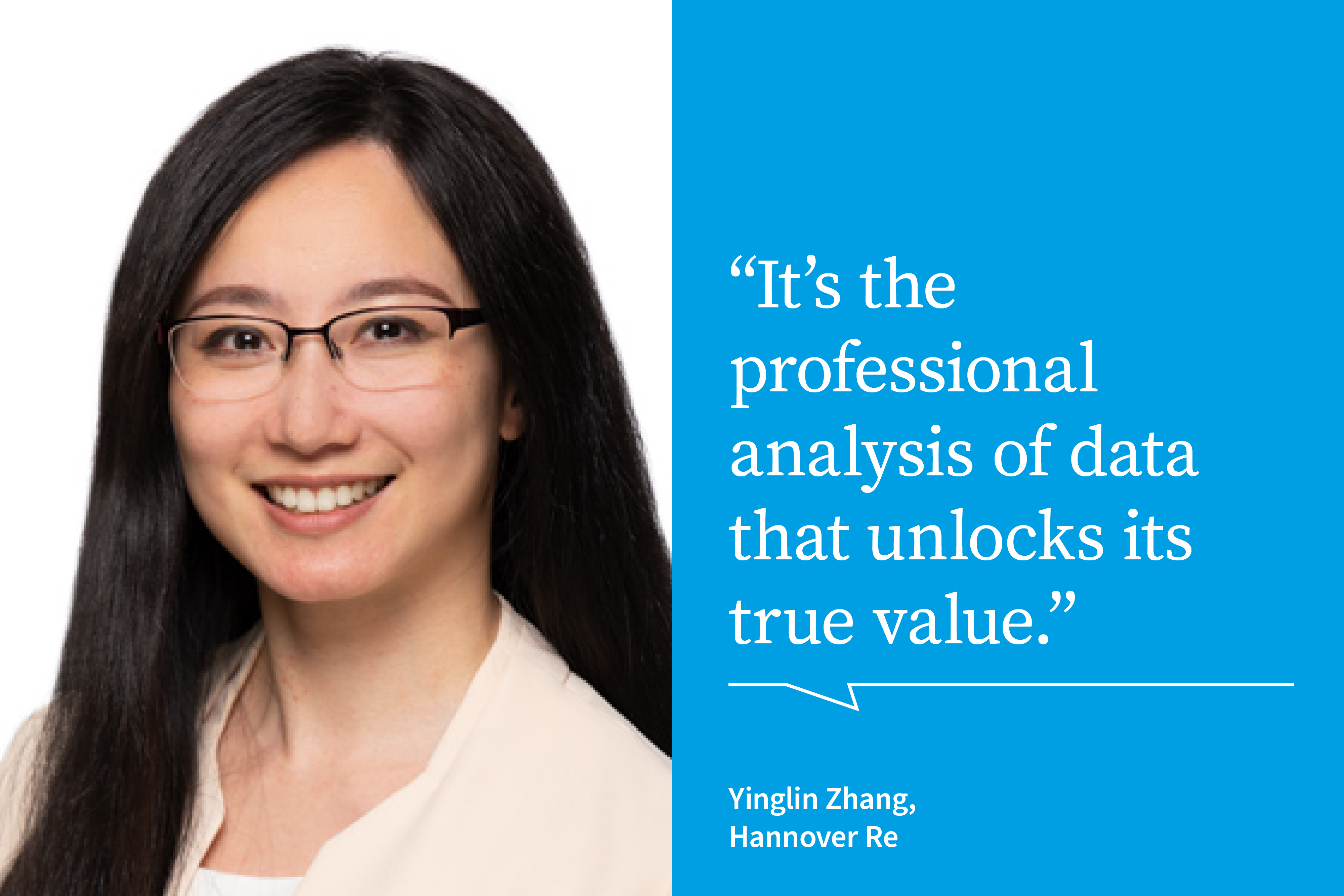Data-driven developments and strategies in the life & health sector
Yinglin Zhang, General Manager of Life & Health Data Analytics at Hannover Re, looks at data innovation and responsibility.
Life and health insurers are never short of data. And now, with the growth of digitalisation and new analytical techniques, they can dig deeper, engage with consumers in new ways, and create increasingly personalised products.
Data analytics has always been at the heart of insurance, says Yinglin Zhang, who leads Hannover Re’s Life and Health Data Analytics department, but never more so than today, thanks to technological innovations.
“Many opportunities are opening up because of advances in data collection, storage and processing, combined with new analytical approaches,” she says. “And this comes with a duty to use data responsibly and ensure consumer security and privacy.”
Data analytics defined
As Zhang explains, data analytics is the application of statistical methods and computer science to relevant insurance data, in order to make reliable predictions about insurance events. She emphasises that, in contrast to business intelligence, which is limited to historical data, the insurance goal is to gain insights into unknown future events, which has a strong modelling focus.
“Data analytics combines mathematical and statistical modelling to create methodologies, IT knowledge to provide the infrastructure and process flows, and actuarial knowledge to understand the business context,” says Zhang. “All three are essential for effective data analytics in life and health insurance.”
In addition to asset-related data for capital management, insurers can work with two types of liability data, says Zhang: portfolio data and third-party data.
“Portfolio data includes policy and policyholder information, such as age, gender, beneficiary details and claim details,” she says. “If relevant, medical, lifestyle and financial data may also be sought. Third-party data refers to publicly available population statistics or data acquired from specialist external providers.”
Unlocking the value of data

“For pricing and valuation, data analytics provides sophisticated best-estimate forecasting. This ensures that premiums are set at the right level and that insurers have sufficient reserves. And for risk management, which is critical in our highly regulated industry, data analytics enhances portfolio monitoring and future risk quantification. Finally, for product development, data analytics helps insurers adapt to evolving trends and create innovative solutions, such as pay-as-you-live products that use connected technology.”
Along with the availability of new data sources and advances in IT and medical technology, Zhang says climate change and socio-demographic shifts associated with evolving lifestyles and heightened social awareness are key trends influencing the life and health sector.
“There is a growing emphasis on insurers’ social responsibility. For example, there is increasing demand for products that are digital, easy to access and socially fair. Data analytics plays an important role in such developments, helping to unlock new opportunities as well as mitigate associated risks.”
Data challenges and responsibilities
Zhang identifies three challenges relating to data analytics: the responsible use of data, the demand for flexibility and efficiency, and model explainability. The latter means taking a data model and being able to explain the behaviour in human terms. With complex black box models, Zhang says it’s difficult to understand the inner workings.
“Data responsibility means addressing regulatory compliance and privacy concerns, as well as avoiding the reinforcement of social bias,” she says. “Flexibility and efficiency mean ensuring that data analytics is not hampered by unstructured, poor-quality data and outdated IT. As for removing complexity and increasing transparency, using explainable AI beside classic statistics is helpful for our core business.”
Out-of-the-box thinking
Zhang mentions Hannover Re’s hr | bluebox service as an example of innovation in data analytics, as well as industry collaboration. The service was deliberately called ‘bluebox’ to distinguish it from the standardised and less transparent black box concept.
“Our service is designed to create financial value through a mutually beneficial approach. We offer a bespoke solution that honours the individuality of different markets, products and business needs. Cedents receive actionable recommendations to solve specific business problems, and we use explainable AI to identify patterns, trends and drivers behind events. In addition, we also suggest prevention strategies."
Zhang says use cases include early lapse analysis and pattern recognition for potential cross-selling and up-selling opportunities, which is where AI and predictive modelling come into play. The insights provided by hr | bluebox, she adds, are supported by personalised interpretations and advice from Hannover Re’s data scientists.
Yinglin joined Hannover Re in 2022 from the primary insurance sector. She holds a PhD in financial mathematics and, in addition to her role with Hannover Re, teaches at universities.
User questions
Answered questions
Unanswered questions
Views: 5508
Downloads: 0
| 0 % | |
| 0 % | |
| 0 % | |
| 0 % | |
| 0 % |
Page is favored by 0 user.
Contact inquiries: 0


